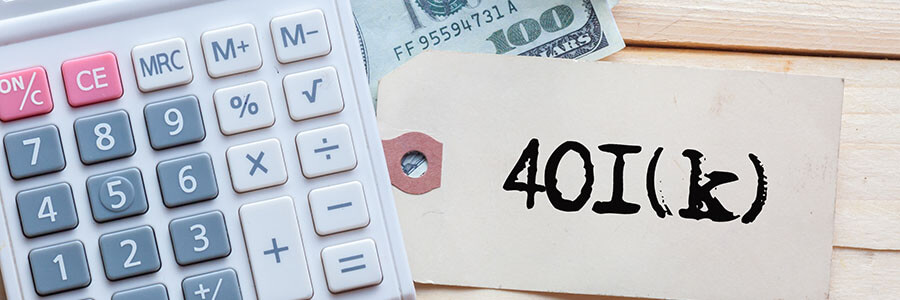What Brokers Need to Know About SECURE Act 2.0

Quick Look: Ready for SECURE Act 2.0? The bill’s retirement investment proposals will open the door for greater savings opportunities as people plan for life in their golden years. As legislation reaches its final stages and open enrollment quickly approaches, now is an opportune time for brokers to discuss with their clients what to expect.
As of June 2022, the Senate Finance Committee approved a measure referred to as the Enhancing American Retirement Now (EARN) Act. This measure includes similar, or in some cases, the same provisions as found in the Securing a Strong Retirement Act, which passed a House bipartisan vote in March.
This newest iteration has been dubbed SECURE Act 2.0 and is intended to build upon the original SECURE Act passed in 2019, which focuses on increasing retirement security and access to workplace savings, among other provisions. The goal of this legislation is to make it easier for employees to contribute to their retirement savings plans and provide some financial relief for small- and medium-sized businesses (SMBs) wanting to offer the benefit.
With financial wellness on the forefront of industry conversations, ensuring SMB clients understand and are taking advantage of enacted changes can make an impact on how they recruit, budget, and prepare for the future.
Proposed changes under SECURE 2.0
SECURE 2.0 is intended to make retirement savings plans more affordable and accessible both for SMB employers and their employees. While commonplace in most larger organizations, one survey shows employee-funded retirement plans are more than twice as likely to be offered by large companies (90%) than small businesses (44%).
Investment into company-sponsored retirement savings plans may have been too expensive in years past. However, with the proposed legislative changes, they may secure a spot among SMB benefits plans going forward. Here’s an overview of what’s included.
Matching of student loan payments with 401(k) contribution
Many employees struggle with finding a balance between paying down debt and saving for retirement. While some may want to make larger contributions to their 401(k), they are prioritizing paying off student loans first to avoid high interest and penalty fees. SECURE 2.0 will allow employers to match contributions to employee retirement savings accounts based on their student loan payments. Employer 401(k) matches can remain intact regardless of whether an employee also contributed once they elect to sign up for this voluntary program.
Increase in catch-up contributions for older workers
Employees ages 62-64 can add more money to their retirement savings plans in catch-up contributions of up to $10,000. The idea is to give older workers a chance to advance savings to make up for years when contributions weren’t as high.
Additionally, those age 50 or older can contribute an extra $6,500 to their 401(k) and 403(b) plans. This is only available until they reach the $20,500 limit, although they also have the option of adding up to $3,000 more (toward a $14,000 cap) for a SIMPLE IRA. It should be noted, these are capped contributions for 2022 and are forecasted to fluctuate in the future.
Qualification of part-time workers for employer retirement plans
An impactful provision kept from the original SECURE Act requires employers offering 401(k) plans to extend this benefit option to part-time employees. Part-time employees qualify by working at least 500 hours per year for three consecutive years. The caveat per SECURE 2.0 changes this year-mark to two instead of three, which gives part-time employees faster access to enrolling in a retirement savings plan.
Tax credits for SMBs setting up retirement savings for employees
SECURE 2.0 also outlines enhanced tax credits for SMBs providing retirement plans for employees. The provisions increase tax credits to 100% (compared to the current 50%) of qualified costs for SMBs with up to 50 employees. They also increase credit potential for retirement plan startup costs to a limit of $5,000 (an increase from $500).
This a partial look at what’s to come once SECURE 2.0 is passed into law. The nuance of these proposed changes can quickly become complex and hard to track. As a professional employer organization (PEO) broker, you can give your clients access to a full suite of HR services, including compliance, risk management, and recruiting, to help prepare for upcoming changes and pinpoint which areas of legislation will be most applicable to their workforce.
How the SECURE Act helps with retirement
Saving for retirement is a priority for all ages. While it used to be standard to start saving in the early years of a person’s career, economic hardships, particularly due to the pandemic, have made it just as important for those in the later part of their work life. Fortunately, there are benefits for everyone under SECURE 2.0, allowing everyone a chance to invest in a better financial future.
Requires 401(k) enrollment for younger employees
Most entering the workforce seek financial wellness opportunities. However, lack of education and explanation of benefits often prevent employees from enrolling in a 401(k). Among the updated SECURE 2.0 provisions is a requirement for companies to auto-enroll newly hired, eligible employees in any recently defined retirement savings plans at a 3% contribution rate.
Companies must also auto-escalate contributions on a yearly basis by 1% per year, until totaling at least 10% of an employee’s pay. Employees would still be able to contribute more or less as desired depending on the annual contribution limits. Exemptions apply to SMBs with fewer than 10 employees and new businesses which started operations within a three-year window.
Additionally, employers are allowed to incentivize employees to contribute to their 401(k) accounts. Per the new provisions, employers are allowed to provide financial rewards, like gift cards, to encourage employees to secure their retirement savings.
Enhances savings opportunities for older employees
With an increase of the required minimum distribution (RMD) age from 70 to 72, and eventually to 75 by 2033, SECURE 2.0 allows employees to save for retirement longer before potential IRS penalties go into effect. Therefore, older employees have more time to add to their retirement savings tax-free. Furthermore, employees between 62 and 64 years of age can set aside up to $10,000 annually versus the previous $6,500.
Meanwhile, under SECURE 2.0, the tax penalty is reduced to 25% from 50% if employees fail to take their full RMD. Should a person miss the deadline for taking their annual RMD, the 50% tax penalty could be waived or reduced if there’s reasonable cause and documented action to withdraw the necessary amount. Though the IRS has the ultimate say in whether the penalty is waived, there’s a chance for relief if necessary.
Benefits of working with a PEO for retirement savings plans
In addition to the standard compensation package of salary and medical benefits, access to flexible retirement savings plans is equally important. Research shows 65% of employees cite money as their reason to look for a new job, with 76% interested in other companies due to a greater focus on financial well-being. Plus, financial stress can create a negative impact on the workforce by taking a toll on employees’ mental health, productivity at work, and interpersonal relationships.
Maintaining a strong financial wellness program is necessary to recruit and retain talent and can affect a company’s growth potential or lack thereof. SECURE 2.0 will equip employees to protect their financial future and calls upon employers to make changes in their workplaces accordingly.
As a PEO broker, you have a team of experts dedicated to researching and preparing retirement savings plans for your SMB clients and keeping them updated on what’s mandated by law and how to offer the most competitive benefits. Contact the experts at ExtensisHR to help support your clients in their future growth.



